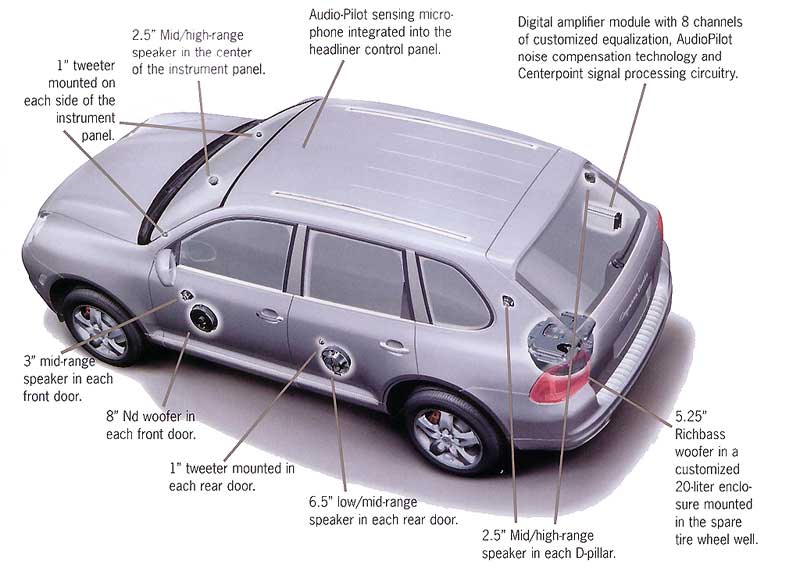|
Bose Cabin Surround Bose engineers have used their considerable expertise to create the ultimate autotive aural experience. To accomplish that challenge, every audio component has been custom-engineered to the spacious interior with the aid of proprietary Bose signal processing. Simply push a button and you're immediately immersed in the breathtaking audio environment of Bose Cabin Surround Sound, which uses proprietary Bose CenterpointTM signal processing to deliver an enveloping, multi-channel experience--even from conventional stereo recordings.
|
 |
|
A digital amplifier delivers 350 watts ouput through eight separate channels of customized equalization. A total of 14 speakers in the dashboard, doors, luggage compartment, and D-pillar provide balanced audio output thoughout the Cayenne.
Patented Bose Nd woofers integrate neatly into the front doors thanks to their ultra-slim profile and lightweight design. The rich bass foundation is enhanced by a 100-Watt subwoofer located in the spare-tire wheel well. Bose signal processing modifies bass output to compensate for the reduces sensitivity of the human ear at lower volumes. The results are lifelike music quality with full, rich bass at any volume level, as well as natural voice reproduction. The system can also reach concert hall volumes with no audible distortion. Finally, Audiopilot Noise Compensation Technology continually monitors the sound in the cabin and seamlessly adjusting audio output to compensate for unwanted noise. A microphone placed in the cabin continuously monitors the overall sound level inside the vehicle and distinguishes between music and unwanted noise, automatically adjusting the music accordingly. The system does the work so the driver and passengers can enjoy the drive, the ride and the music, without the need to continuously adjust the controls.
MOST bus technology The MOST bus system is particularly effective when it comes to enhancing audio ouput. Amplifiers, and CD changers are digitally linked for a much higher quality of sound reproduction, and a more engaging audio experience.
|